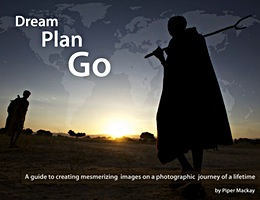
Going on an African Safari is a dream for most wildlife photographers and being in the Maasai Mara during the migration is, hands down, the most exciting wildlife experience in the world. Nowhere in the world, including all other destinations in Africa, will you find the extreme big cat action and plethora of exotic species, especially during the migration season. After finishing my annual back-to-back migration safaris, which were incredible again this year, I wanted to share some helpful insights that will help you get the most out of your safari.
Every year, thousands of passionate photographers ascend onto the African continent with extremely high expectations of returning home with a portfolio of dramatic images as stunning as those they have seen gracing the pages of National Geographic and the sites of the top wildlife photographers. However, a photographer’s first safari always comes with a steep learning curve, much higher than most other wildlife destinations, simply because of the abundance of wildlife sightings, the rapid action, and the ability to react quickly is critical in capturing award-winning images. Working from a safari vehicle can be much more challenging than it looks and for many, it is their first time working with a big telephoto lens or top end DSLR, which brings a range of technical challenges. Too often, people return home disappointed with their images, from their trip of a lifetime, wondering where they went wrong. However, with some solid preparation, awareness of the challenges, and practicing skills and techniques in advance, you can radically improve the outcome of your images on your first safari.
Research and book your safari well in advance so you have enough time to prepare properly without making last minute decisions on important details, especially for equipment. I highly suggest knowing the exact gear you will take at least 6 months before your departure and be well-practiced with using it. The minimum level to aim for is to be able to change your primary settings while looking through the camera; aperture, shutter, exposure, and ISO. If you have to pull your camera away and look at the back of your camera, or top of your camera, you have probably missed the shot. Next, I would suggest switching to back button focus, which allows you to seamlessly go from single shot for compositional value to continuous focus to quickly follow the action. This usually takes one or two days of shooting to get used to, so this is not something to switch to on the first day of your safari! Practice this in advance until you can use it without thinking about it.
Now, practice these basic skills in an unpredictable wildlife environment such as a wetland area full of bird activity. Are you able to go from subject to subject, react quickly through the lens, and create a technically perfect image; sharp, strong composition, nothing clipped, and a shallow or deep depth of field that works with your background? Once you are nailing these shots, add the skill of dramatic lighting and motion by manipulating your camera settings. Technically, you would now have your photographic skills at a level that would greatly help to increase your chances of capturing incredible moments on Safari. The spirit-N-Light workshops were specifically created to help photographers advance their skills and be prepared to travel to exotic locations.
Another aspect of preparing for your safari is the safari vehicle you will be using. Photographing from a safari vehicle looks easy enough, but it is much harder than most people initially realize. There are numerous styles of vehicles, depending on the region, reserve, camp or lodge where you are staying or agent you are working with, each presenting different challenges in stabilizing your big telephoto lenses and working with multiple bodies. Depending on the style, you may need clamps, beanbags, panning plates, monopods, or special brackets to give you the most fluidity and stabilization. Peak action comes on fast and with little warning; having the right support is critical in being able to move your gear quickly, grab the shot, and capture a sharp image. This is also why it is vital to have an entire row to yourself in the safari vehicle, so you can spread out your gear and work from both sides of the vehicle.
Even with your skills at an advanced level, the most critical element of being able to capture stunning wildlife photographs on safari is being able to anticipate the animal behavior. On a fist safari, most people get so excited by what they see they immediately react, shout for the driver to stop, raise their cameras, fire away, and creating a snap shot of what is happening in front of them. This is where experience in the location really pays off. As the wheels are still turning, an experienced African wildlife photographic guide will be quickly anticipating the action, thinking beyond the subject, and position the vehicle for the best action, light and background. Jumping out into the most incredible wildlife destination is exciting and increases your luck, but it does not guarantee stunning images. If you bring the luck, I WILL provide the opportunities, but ultimately it is the preparation you put into your own skills before you click the button that will determine the quality of your safari images.







Hey Piper those Leopards are pretty neat, I was with you when you took that! It was a wow moment followed by a discussion on Canon ISO capacity, well what a beauty hey. Looking forward to catching up in Botswana next year and of course if I win the lottery it will be sooner!!
Much love, Silva
Piper sums it up perfectly in this article!
I traveled to Tanzania and Kenya with her in February 2016 for my first african safari. It was a very eyeopening and exciting trip!
If it’s your first trip that excitement is very hard to control at times while photographing. When shooting along with Piper she would be calling out, watch the horizon, check your shutter speed, look at the background. Listen to your guide… they know what they are talking about! Thats what you paid them for!!!
After looking at my trip photos, I can’t stress how important the background is. It can be a perfect subject in great light, but if the background is a cluttered mess it’s a throwaway…. In your excitement take a few shots, but then try and settle down and look at the scene in front of you. Whats the best composition with the least amount of distractions? Long lens tight, or a shorter lens for a story telling scene. Mix them up if you are able.
Most of all enjoy the whole African experience!!! And don’t plan on it being a one time trip…Africa gets in your veins!!
Thanks Piper for this wonderful experience that will change my life forever!!
Save travels, until we meet again…. Neil
Thanks Neil for you reinforcement, wonderful comments, and testimonial. I often have very talented and experienced wildlife photographers on my safari and the excitement can over take that experience. Preparation is key, when it comes to your fist safari and yes, Africa gets in your veins and it is usually never only one trip of a life time, but many!!
Piper,
Thanks for the preparation advice. I’d love to get to Africa for a Photo Safari with you, if not however, your advice works equally well here in North America too! For the last 15 years I’ve done Bald Eagle nesting research for the WVDNR and USFWS. Birds in flight can be challenging and great shots are hard to get! Many of my shots are research catalog photos but as your article states, preparation and being familiar with all your equipment is a necessity!!!
Thank you for all you do to promote wildlife and keeping photographers around the world dreaming of that “maybe someday” trip to Africa in our minds!!!
Jay Smith
You are very welcome Jay. I would love to have you on one of my safaris! Africa is a magical place that everyone should visit at least once in their lives.